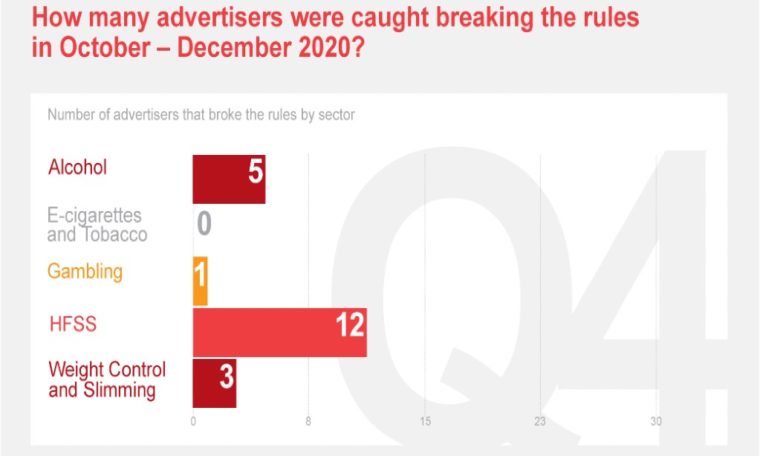
We've published the findings from the third of our monitoring sweeps, as part of a year-long project to identify and tackle age-restricted ads appearing in children’s online media.
Advertisers placing age-restricted ads online are required, under the Advertising Code, to target their ads away from child audiences. In particular, that means websites and YouTube channels designed for children or that attract a disproportionately high child audience cannot carry age-restricted ads.
This latest report continues our CCTV-style scrutiny of online ads for: gambling, alcohol, e-cigarettes and tobacco, slimming and weight control products and food and soft drinks classified as high in fat, salt or sugar (HFSS products). Following our first and second reports, we are encouraged by the lower number of ads found to have broken the rules. In particular, there has been a significant fall in the number of HFSS ads appearing in children’s online media. Across the websites and channels monitored, there was a 74% fall in HFSS ads on the previous quarter.
Over the three month period, between October and December 2020, using monitoring tools to capture age-restricted ads served on a sample of 49 websites and 12 YouTube channels attracting a disproportionately high child audience, we found that:
- Overall, 47 age-restricted ads broke the advertising rules; and
- In total, 21 advertisers placed age-restricted ads in 23 websites and 8 YouTube channels aimed at, or attracting a disproportionately large, child audience.
We:
- are taking follow-up action to contact the advertisers to secure the removal of the problem ads; and
- warned the advertisers to review and, as necessary, amend their practices to ensure they target future ads responsibly.
A breakdown of each product category reveals the following number of breaches:
Alcohol:
- 6 different alcohol ads from five advertisers on 6 websites
Gambling:
- 3 ads on 3 websites by one advertiser
HFSS:
- 27 ads by 12 advertisers on 16 websites and 8 YouTube channels
Weight reduction:
- 11 ads by 3 advertisers on 8 websites and 1 YouTube channel
Smoking:
- No ads for e-cigarettes or tobacco products were picked up during this monitoring period
Ads for gambling, alcohol and weight reduction stayed at their previous levels. The progress we expected to see in terms of improved compliance of HFSS ads with the rules was significant. Follow-up work by us with HFSS advertisers found in breach of the rules and their block listing of monitored sites appear to have had a positive impact on reducing the number of breaches, and we expect to see further improvements in the January to March 2021 monitoring we are undertaking now.
Figures in this latest monitoring exercise reveal the number of HFSS ads in children’s media have fallen in comparison with the previous quarter:
| Monitoring Period | Total no. of HFSS ads in breach of the rules | No. of HFSS likely to appeal to kids | No. of HFSS ads not likely to appeal to kids (i.e. technical breaches*) | No. of HFSS advertisers |
|---|---|---|---|---|
| Q3 | 102 | 56 | 46 | 35 |
| Q4 | 27 | 15 | 12 | 12 |
| Difference | 75 fewer ads | 41 fewer ads | 34 fewer ads | 23 fewer advertisers |
*includes products such as tuna, olive oil, pate and goat kefir
Once we have run the monitoring again in Q1 2021, we will in the summer publish a final report, reflecting back on this year-long project and in which we reserve the discretion to publicise repeat offenders, if there are any. We will also consider the same or similar monitoring in the future, taking action where age-restricted ads are served on child-orientated websites and YouTube channels.
Read the reported results and our monitoring methodology.
Advertising Standards Authority Chief Executive, Guy Parker said:
“We’re pleased to see the number of age-restricted ads we picked up on, in particular for HFSS food and drink, reduce significantly. We remain alive to concerns and we will be monitoring and reporting on this again. But we’re making significant progress in our ambition to build a culture of zero tolerance for age-restricted ads appearing on websites aimed at children and we expect that progress to continue.”
More on
-
Keep up to date
Sign up to our rulings, newsletters and emargoed access for Press. Subscribe now.


